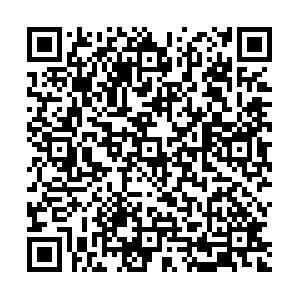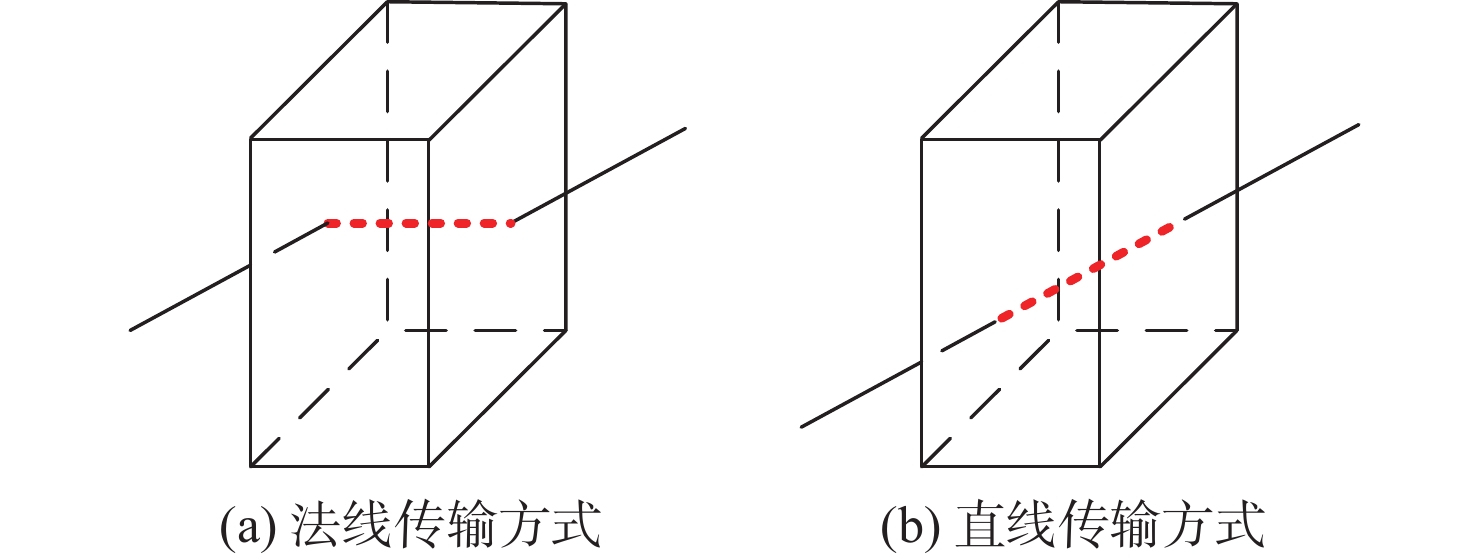-
摘要:
针对微纳卫星在空间环境中遇到的总剂量(TID)效应,为更加准确地评估卫星内敏感点的剂量值,基于正二十面体的几何划分方法改进了传统的空间网格划分,宏观计算并验证了粒子透过材料的衰减,实现扇形角等效评估优化。围绕计算准确度和效率,构建形状模型进行比较验证,通过与优化等立体角划分法、正八面体划分法的比较,表明该方法更加稳定高效,计算速度可提高6.4%,更适合评估复杂形状模型。基于改进的三维总剂量评估方法,对形状模型进行针对性总剂量防护,防护效果相较于无差别防护可提高255.1%。研究成果可有效提高微纳卫星总剂量评估效率,保障星内敏感器件在任务周期内的可靠运行,为微纳卫星总剂量防护提供重要参考。
Abstract:Targeting the total ionizing dose (TID) effects that micro-satellites experience in space, the traditional spatial mesh division is improved based on the icosahedral space grid method in order to more accurately evaluate the TID of sensitive points in the satellite, realize the optimization of the equivalent evaluation of the sector shielding, and calculate and verify the attenuation of particles through the material macroscopically. Around the calculation accuracy and efficiency, shape models are built for comparison and verification. This approach is more stable and efficient than the optimized equal solid angle partitioning method and the normal octahedron partitioning method. Its calculation speed may be enhanced by 6.4%, making it more appropriate for analyzing complicated shape models. Based on an improved three-dimensional TID evaluation method, targeted TID protection is provided to the shape model, and the protective effect can be increased by 255.1% compared with indiscriminate protection. This method can effectively improve the efficiency of TID evaluation of microsatellites, ensure the reliable operation of sensitive devices in the satellite during the mission period, and provide an important reference for TID protection of microsatellites.
-
Key words:
- micro-satellites /
- space radiation /
- radiation protection /
- total ionizing dose /
- meshing method
-
[1] 党炜. COTS应用于空间辐射环境的可靠性研究[D]. 北京: 中国科学院研究生院, 2007: 3-68.DANG W. Reliability study on COTS used in space radiation environment[D]. Beijing: Graduate School of Chinese Academy of Sciences, 2007: 3-68(in Chinese). [2] JI X Y, LI Y Z, LIU G Q, et al. A brief review of ground and flight failures of Chinese spacecraft[J]. Progress in Aerospace Sciences, 2019, 107: 19-29. doi: 10.1016/j.paerosci.2019.04.002 [3] BEDINGFIELD K L, LEACH R D. Spacecraft system failures and anomalies attributed to the natural space environment[C]//Proceedings of the Space Programs and Technologies Conference. Reston: AIAA, 1995: 41-43. [4] KIMOTO Y, KOSHIISHI H, MATSUMOTO H, et al. Total dose orbital data by dosimeter onboard Tsubasa (MDS-1) satellite[J]. IEEE Transactions on Nuclear Science, 2003, 50(6): 2301-2306. doi: 10.1109/TNS.2003.821399 [5] BUDROWEIT J, SZNAJDER M. Total ionizing dose effects on a highly integrated RF transceiver for small satellite radio applications in low Earth orbit[C]//Proceedings of the IEEE International Symposium on the Physical and Failure Analysis of Integrated Circuits. Piscataway: IEEE Press, 2018: 1-6. [6] SLATER W S, TIWARI N P, LOVELLY T M, et al. Total ionizing dose radiation testing of NVIDIA Jetson nano GPUs[C]//Proceedings of the IEEE High Performance Extreme Computing Conference. Piscataway: IEEE Press, 2020: 1-3. [7] 张振力, 李郑发, 唐心春, 等. 基于Pro/E的三维总剂量分析软件实现及其在微小卫星中的应用[J]. 航天器环境工程, 2014, 31(6): 620-624. doi: 10.3969/j.issn.1673-1379.2014.06.010ZHANG Z L, LI Z F, TANG X C, et al. Development of three-dimensional total dose analysis software based on Pro/E and its application in micro-satellites[J]. Spacecraft Environment Engineering, 2014, 31(6): 620-624(in Chinese). doi: 10.3969/j.issn.1673-1379.2014.06.010 [8] 薛玉雄, 马亚莉, 杨生胜, 等. 载人航天器舱内辐射剂量监测技术综述[J]. 航天器环境工程, 2010, 27(2): 210-214. doi: 10.3969/j.issn.1673-1379.2010.02.018XUE Y X, MA Y L, YANG S S, et al. Overview of radiation dose monitoring technology in manned spacecraft[J]. Spacecraft Environment Engineering, 2010, 27(2): 210-214(in Chinese). doi: 10.3969/j.issn.1673-1379.2010.02.018 [9] 蔡明辉, 韩建伟. 基于ProE的航天器三维屏蔽与辐射剂量评估方法研究[J]. 宇航学报, 2012, 33(6): 830-835.CAI M H, HAN J W. Method for evaluating shielding thicknesses and radiation dose inside spacecraft based on ProE[J]. Journal of Astronautics, 2012, 33(6): 830-835(in Chinese). [10] 高著秀, 王玉林, 孙健, 等. 基于结构表面云图的三维总剂量效应评估方法研究[J]. 宇航总体技术, 2018, 2(5): 37-41.GAO Z X, WANG Y L, SUN J, et al. A new method for evaluating three-dimensional total dose effects based on structure surface cloud picture[J]. Astronautical Systems Engineering Technology, 2018, 2(5): 37-41(in Chinese). [11] CALVEL P, BARILLOT C, PORTE A, et al. Review of deposited dose calculation methods using ray tracing approximations[J]. IEEE Transactions on Nuclear Science, 2008, 55(6): 3106-3113. doi: 10.1109/TNS.2008.2007298 [12] NIDHIN T S, BHATTACHARYYA A, GOUR A, et al. Measurement of radiation absorbed dose effects in SRAM-based FPGAs[J]. IETE Journal of Research, 2020, 68(5): 3418-3427. [13] KARTASHOV D, SHURSHAKOV V. Analysis of space radiation exposure levels at different shielding configurations by ray-tracing dose estimation method[J]. Acta Astronautica, 2018, 144: 320-330. doi: 10.1016/j.actaastro.2018.01.013 [14] PONOMAREV A L, NOUNU H N, HUSSEIN H F, et al. NASA-developed ProE-based tool for the ray-tracing of spacecraft geometry to determine radiation doses and particle fluxes in habitable areas of spacecraft and in the human body: NASA/TP-2007-214770 [R]. Washington, D. C.: NASA, 2007. [15] WANG N, LEE J L. Geometric properties of the icosahedral-hexagonal grid on the two-sphere[J]. SIAM Journal on Scientific Computing, 2011, 33(5): 2536-2559. doi: 10.1137/090761355 [16] 陈善强. Geant4在空间辐射效应分析中的应用研究[D]. 北京: 中国科学院大学, 2019: 56-59.CHEN S Q. Space radiation analysis based on Geant4[D]. Beijing: University of Chinese Academy of Sciences, 2019: 56-59(in Chinese). [17] SAWYER D M, VETTE J I. AP-8 trapped proton environment for solar maximum and solar minimum: NASA-TM-X-72605[R]. Washington, D. C.: NASA, 1976: 6-8. [18] XAPSOS M A, SUMMERS G P, BARTH J L, et al. Probability model for cumulative solar proton event fluences[J]. IEEE Transactions on Nuclear Science, 2000, 47(3): 486-490. doi: 10.1109/23.856469 [19] SAJID M, CHECHENIN N G, TORRES F S, et al. Space radiation environment prediction for VLSI microelectronics devices onboard a LEO satellite using OMERE-TRAD software[J]. Advances in Space Research, 2015, 56(2): 314-324. doi: 10.1016/j.asr.2015.04.011 [20] SELTZER S M. Updated calculations for routine space-shielding radiation dose estimates: SHIELDOSE-2: NISTIR 5477[R]. Gaithersburg: NIST, 1994. [21] ZIEGLER J F. Stopping of energetic light ions in elemental matter[J]. Journal of Applied Physics, 1999, 85(3): 1249-1272. doi: 10.1063/1.369844 -







 下载:
下载:














